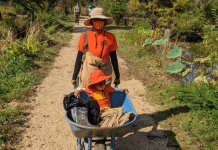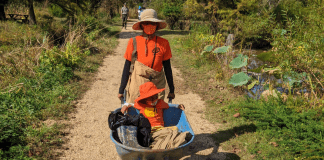 Thankfully, my son doesn’t have food allergies, but he goes to school with children that do. Chances are that your child does too. Food allergies in children are fairly common, affecting about one in every 13 children, or about two in every classroom in the United States. It’s important to educate yourself about food allergies so that you can do your part to keep your child’s peers safe. This post will teach you six things you should know about children’s food allergies.
Thankfully, my son doesn’t have food allergies, but he goes to school with children that do. Chances are that your child does too. Food allergies in children are fairly common, affecting about one in every 13 children, or about two in every classroom in the United States. It’s important to educate yourself about food allergies so that you can do your part to keep your child’s peers safe. This post will teach you six things you should know about children’s food allergies.
-
Common Food Allergens
Children can be allergic to any food; however, the most common food allergies in the United States are to:
- Milk
- Eggs
- Peanuts
- Soy
- Wheat
- Tree nuts
- Fish
- Shellfish
-
Symptoms Vary
When it comes to food allergies, reactions to the offending food can vary widely. One child may break out in hives when exposed to a food allergen, while another child experiences digestive issues, such as vomiting or diarrhea. In severe cases, children may even have trouble breathing or experience anaphylactic shock.
-
Food Allergies Can Be Life-threatening
In some children, exposure to a food allergen can lead to anaphylaxis, a severe and potentially life-threatening allergic reaction. Children who experience this type of allergic reaction will typically have an EpiPen® which can be given to them in case of accidental exposure to a food allergen. Parents, school nurses, or other adults caring for the child will be trained how to administer the EpiPen® in case of an emergency. Older children may even be able to administer it to themselves. An EpiPen® will not stop an allergic reaction, but it is designed to stabilize the child long enough to get to the hospital for emergency care.
-
It Only Takes a Tiny Amount
It only takes a small amount of food to trigger an allergic reaction. Individuals with food allergies must completely eliminate their food allergens from their diet, even trace amounts. For example, someone with a milk allergy could have an allergic reaction to a product that was produced on the same equipment with milk, even though the product they consume doesn’t have milk as a listed ingredient. You will often see warnings on food labels that a product may contain trace amounts of a food allergen, for example, “May contain soy” or “This product was produced in a facility that also has peanuts”. If your child’s school or daycare is peanut-free and you are bringing treats for the class, be sure to look out for these warnings on food labels, even if peanuts are not listed as an ingredient.
-
Watch Out for Cross-Contact
Cross-contact is when a food allergen is accidentally transferred from one food to another. For example, if you make a sunbutter sandwich (sunbutter or sunflower seed butter is a common, allergy-friendly substitute for peanut butter) for someone using the same knife that you used to make a peanut butter sandwich (even if you rinsed it in between), a small amount of peanut butter could be transferred to the sunbutter sandwich. When preparing foods, surfaces, utensils, and hands need to be thoroughly cleaned in hot soapy water to avoid cross-contact. Keep this in mind if you ever prepare food for other children. For example, if you send peanut-free cookies to school for a birthday celebration, make sure that cross-contact doesn’t occur when you prepare, store, or serve them.
-
Peanut-Free Schools & Day-cares Can Save Lives
Peanut allergies are a common cause of anaphlylaxis, which is why some schools and day-care centers are now peanut-free. Additionally, children with peanut allergies can react to very small amounts of peanuts. In some cases, even touching or inhaling something with peanuts can trigger an allergic reaction. While it can limit your child’s lunchbox options (which I get since PB&Js are one of my picky eater’s few accepted foods), adhering to your school’s peanut-free policy is critical as it can be a matter of life and death for a child with a peanut allergy.
How Can You Be Helpful?
- If your child has a play-date with a child with food allergies, always check with his parents before giving him anything to eat.
- When hosting other children for a birthday party where food will be served, it’s always a good idea to check with the other parents about food allergies ahead of time.
- If there is a child with food allergies in your child’s class, try to give her parents a heads up if you bring treats to school (and of course, no foods with peanuts if the school is peanut-free). If you don’t know the parents, you can ask the teacher to notify them. This gives them a chance to send an allergy-friendly treat for their child so that she doesn’t feel left out.
- When providing food for other children, always keep in mind the above information about trace amounts of food allergens and cross-contact.
Want to help your child be a good friend to children with food allergies? Learn how at Be A Pal.















